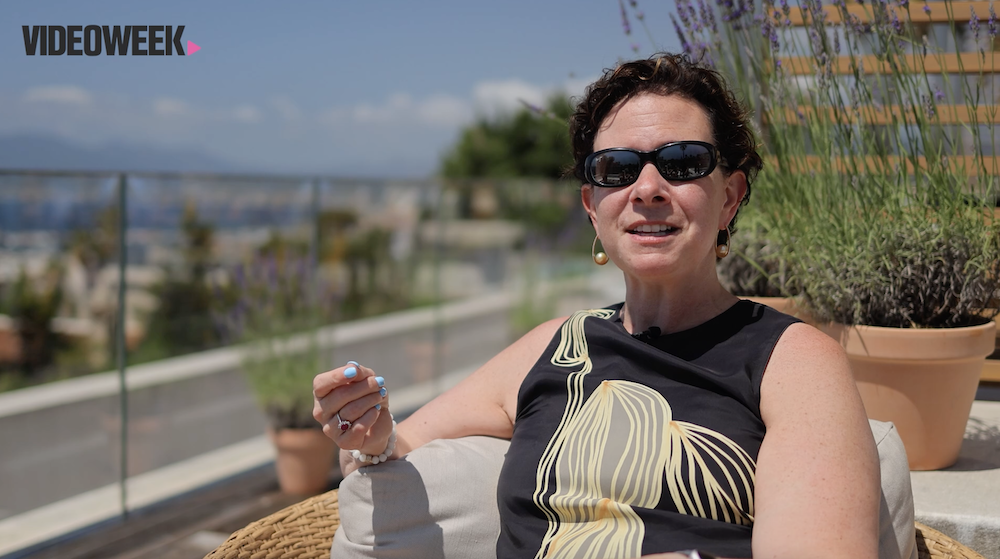 In this edition of the Buy-Side View, Daniel Mogridge, Media Lead at Vodafone, calls for a return to the fundamentals of TV advertising. While CTV presents great opportunity, he argues that advertisers should focus less on ad tech and more on creativity, ensuring audiences are at the core of their plans.
In this edition of the Buy-Side View, Daniel Mogridge, Media Lead at Vodafone, calls for a return to the fundamentals of TV advertising. While CTV presents great opportunity, he argues that advertisers should focus less on ad tech and more on creativity, ensuring audiences are at the core of their plans.
What is your biggest bugbear when it comes to video and CTV advertising?
It is the slight cliché at the moment, it’s measurement. CTV is a very exciting space, and it’s very fast-moving. But we need to be able to understand it, without sounding like a luddite, in the way that we always did with traditional or linear TV. You start to realise that we had it really good. And now, as things go off in all these different directions, it’s very easy to get carried away with the latest, flashiest thing, when really we want to make sure that we’re basing what we’re doing on where the audience is, what they’re consuming, and how they’re consuming it.
At the same time CTV is exciting because it’s giving us a chance to put 30-second ads in front of people again, which has become harder and harder over the last 10-15 years. And they’re a really valuable piece of advertising space. So it’s a fantastic opportunity for us to start using them again.
Which do you think video advertising is the most effective for – generating awareness and brand-building, or driving short-term sales?
The reality is that video advertising can do both. It’s a very broad church. But my observation would be that we try to make everything into performance media. And whilst in the short-term that can be very alluring, we shouldn’t overlook the long-term benefits of how, going back to 30-second ads again, they are fantastic for building brands.
With some of the discussions we’ve had with some CTV or VOD suppliers, they start to talk to us a lot about the targeting and the performance benefits. And while that’s great, what I’m really excited about is, you’ve got some amazing content which millions of people are watching, and I can put a really great ad in the middle of it – which sounds very simplistic, but that is a really, really powerful tool as well. So it can do both, but I think the brand-building side of it is being slightly overlooked.
Are you investing in CTV advertising? How will the shift towards CTV change your TV buying strategy?
We are shifting more and more into it, whether that’s BVOD, SVOD, AVOD, or CTV on some of the OEMs, it is something that is happening. It’s obviously having a change on how we plan; we need to be planning it holistically, but the measurement issues that we mentioned before, and the slightly siloed way that it can be bought, makes it difficult.
If anything I would like to get back to planning it in much more of an audience-focused way, as we used to plan TV; looking at how much share was going into different channels, what were the top-rated programmes, all that sort of stuff.
Without sounding like I want to drag myself back to the early 2000s, that’s sort of how I think we need to look at, a bit more from the consumer’s eyes. Because no consumer is sitting at home thinking, “I really need to increase my share of viewing into SVOD.” They’re just going, “There’s an amazing programme over there, I think I’d like to watch it.” And that’s sort of how we should think about it, rather than the method of delivery.
A lot of CTV buying is limited to broadcasters and YouTube – are you spending with any of the smaller CTV publishers?
They’re not off the plan, but we’re looking at the biggest opportunities first. The first place we’re going is to where we think the big audiences are, although some of this is a little bit of supposition because we haven’t got the measurement we need. Because as we see that decline in the 1+ cover from linear TV, and we’re trying to build that back, you’re naturally going to the places which have volume.
Once we’ve figured that out, then I think those smaller players will start to have more of a role, because we’ll be looking for more of the incremental gains – whereas actually what we’re looking for is some big 1+ cover gains that we’re trying to make back.
Which ad tech solution has delivered the most impact for your business?
Ad tech has done some wonderful things. I think it’s become a bit too much of a focus for us. The thing that is going to make advertising work as part of a broader marketing campaign is creativity. That’s the thing we need to start talking about and getting that back. And ad tech can’t deliver creativity. Ad tech should be there to help us deliver really creative advertising campaigns, whether they are brand or whether they are performance. So the thing that we at Vodafone are trying to do is bring creative back, rather than focusing on an ad tech solution. Ad tech should be there to serve the creativity of what we’re doing, not to lead it.
Which metrics do you value the most when it comes to video and CTV advertising?
This is why measurement is so important and why I think Origin is going to be really important, to help us understand what we know are great platforms, and there are huge amounts of consumers watching them. But the metric that I’m really trying to figure out is in some ways the hardest one to figure out: what is the sum of the parts here? How many people are we actually reaching? I don’t think we’re really putting together our video plans based on, we can get a view through rate on this platform, and this platform has got this CPM. We’re trying to match the metrics and the KPIs back to consumers, and how many of them are we actually reaching, rather than in-platform optimisations.
What could agencies do better to help clean up the industry?
As an industry, and I’m including advertisers, media owners and agencies, we need to think about, what do we want to actually happen with our advertising money?
I want it to go into creating really great content, so that they’ve then got an audience, so that I can put an ad in it again. That way we’ve got a lovely circle where everyone’s benefiting – the brand, the media owner, and the consumer as well. Is the money we spend going to people who are going to be investing in great content? That could be sport, that could be news, that could be new dramas. But in some ways if we just put it all into ad tech, we’re going to end up with a place where there’s nowhere to advertise, because no one will have the money to make great content.
Which person in the industry inspires you the most today?
I’m not going to name any individual person, but there is a group of people who I worked with at Carat, when I first started out, where I think we all shared a love and a passion for what we were doing. And they really helped me not only learn about how this industry works, but also taught me how to work with other people, to not only have a good time, but to produce some fantastic work.
Out of all the video and TV advertising campaigns you’ve been involved with, which are you most proud of?
I’m going to do total recency bias and talk about the latest campaign from Vodafone, which we launched on 3rd June. It’s a campaign that I think brings to life some of the things we’ve been talking about. It’s Vodafone positioning ourselves as the nation’s network, which is all about how we know that we power the connections that bring this great country together. It’s a campaign that’s got creativity at the heart of it, and it’s got populist creativity at the heart of it. It’s not overly targeted. It’s meant to appeal to all. We’re working with Roman Kemp, who’s a fantastic ambassador to us, and appeals to everyone from eight-year-olds through to 80-year-olds. And I’m really, really excited to see what a campaign that’s got populist creativity at the heart of it can do.




